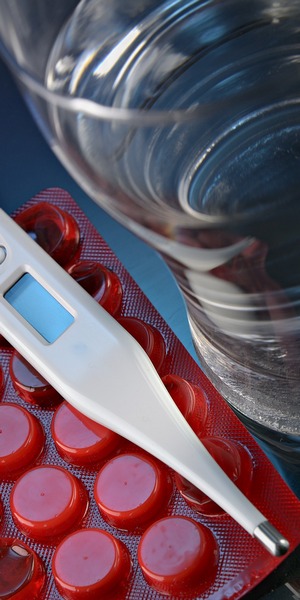10 Strategies for Managing Urinary Incontinence During Cold Weather

As winter’s icy grip takes hold, the challenges for those managing urinary incontinence can sometimes seem as harsh as the weather. The cold has a unique knack for increasing the urge to urinate, a phenomenon often due to our bodies’ reaction to dropping temperatures.
This guide offers ten effective strategies to help you control urinary incontinence and confidently embrace the chilly season. Armed with this knowledge, the cold will no longer have power over your bladder control.
1. Keep Hydrated: A Balancing Act
Hydration in winter is more crucial than one might expect. With cold temperatures leading us to drink less and heated indoor environments increasing evaporation from our skin, winter can be a season of hidden dehydration. Dehydration thickens your urine, increasing its irritation to the bladder and triggering incontinence. Proper hydration, on the other hand, helps keep your urinary system healthy.
The key is moderation, not overconsumption, which can overfill the bladder, causing urgency. Also, choose your fluids wisely. While water is the best choice, other options like herbal teas can provide warmth and hydration simultaneously. However, it’s best to avoid or limit diuretic beverages, like coffee and alcohol, which can stimulate urine production.
2. Dress for Success: The Importance of Layering
Winter wardrobe choices for individuals with incontinence should balance warmth, comfort, and accessibility. Layering clothes is a wise strategy. It allows flexibility for changing temperatures and ease of undressing when using the restroom.
Opt for garments with easy-to-manage fastenings. Pants with elastic waistbands, for instance, are easier to handle than those with buttons or zippers. Velcro fastenings on outerwear can be another time-saving feature. Also, consider the material; fabrics that wick moisture away from the skin can keep you dry and comfortable if leakage occurs.
3. Embrace Warmth: The Power of Heat Therapy
The use of heat therapy for urinary incontinence might sound unusual, but it’s grounded in science. Cold weather tends to tense up the body, including the bladder muscles, leading to incontinence. Heat therapy can help to counteract this by promoting muscle relaxation.
Whether through a heated blanket, warm compress, or a hot water bottle, applying warmth to your lower abdomen can soothe the bladder muscles, reducing urges and spasms. But remember, safety first: always use heat devices as per the manufacturer’s instructions to prevent burns.

4. Plan Ahead: Know Your Restroom Locations
A proactive approach to managing incontinence includes strategic planning when venturing out. Research your destination beforehand and familiarize yourself with available restroom facilities.
In this digital age, there are mobile applications that can help you locate the nearest restroom. This reduces anxiety and ensures you are prepared in case of sudden urges. Moreover, plan your travel route with rest stops in mind, particularly for longer journeys.
5. Strengthen Your Pelvic Floor: The Benefit of Exercises
Pelvic floor exercises, often known as Kegel exercises, are a natural and effective way to combat urinary incontinence. These exercises strengthen the muscles responsible for controlling urine flow, leading to improved bladder control. A well-toned pelvic floor also provides better support for your bladder, lessening the likelihood of incontinence.
It’s recommended to integrate these exercises into your daily routine for maximum benefit. A healthcare provider or physiotherapist can guide you in performing Kegels correctly.
6. Keep Active: The Merits of Movement
Physical activity is a cornerstone of overall health, and its impact on urinary incontinence shouldn’t be overlooked. Regular exercise contributes to maintaining a healthy weight. Excessive body weight can put additional pressure on the bladder and pelvic floor muscles, worsening incontinence symptoms.
Activities that engage your core, such as yoga or Pilates, can be particularly beneficial as they indirectly strengthen your pelvic floor. Remember, though, it’s essential to consult a healthcare provider before starting any new exercise regimen.

7. Be Prepared: Always Carry Supplies
When managing incontinence, a little preparation goes a long way. Always carrying a kit with incontinence supplies, including spare underwear, pads, or protective garments, can provide an added sense of security.
Additionally, packing a travel-sized pack of wet wipes for freshening up, and a resealable plastic bag for storing used items, can help maintain hygiene and confidence. You could also consider waterproof protectors for your bed or chair at home.
8. Mindful Breathing: The Art of Relaxation
Mind-body techniques like mindful breathing can play an essential role in incontinence management. Stress and anxiety can exacerbate urinary urgency, but deep, mindful breathing can induce relaxation, reduce stress levels, and distract your mind from the urge to urinate.
Practicing this technique can also improve your ability to delay urination until you can reach a restroom. Guided relaxation techniques or meditations are widely available online or through various smartphone apps.
9. Stay Connected: Seek Support and Share Your Experiences
The psychological aspect of dealing with incontinence is often overlooked. Yet, feelings of isolation or embarrassment are common. Joining support groups, both online and in your local community, can alleviate these feelings.
Sharing your experiences with others who are going through the same challenges can provide emotional relief, practical advice, and a sense of shared community. Remember, there’s no need to navigate this journey alone.

10. Regular Check-ups: Don’t Neglect Your Health
Regular medical consultations are vital for effectively managing urinary incontinence. Healthcare professionals can monitor your condition, adjust your treatment as necessary, and provide guidance for any new or persistent symptoms.
A routine check-up can include reviewing your medication, assessing your symptom severity, and discussing new or alternative treatments. Even though winter weather can make it tempting to skip appointments, continuous medical supervision is critical for optimal incontinence management.
Table of Key Takeaways
| Tips | Summary |
|---|---|
| Keep Hydrated | Maintain moderate hydration with bladder-friendly fluids. |
| Dress for Success | Use layered, easily removable clothing for quicker restroom access. |
| Embrace Warmth | Apply heat therapy to the lower abdomen to soothe bladder muscles. |
| Plan Ahead | Familiarize yourself with restroom locations when going out. |
| Strengthen Your Pelvic Floor | Practice Kegel exercises daily to enhance bladder support. |
| Keep Active | Engage in regular physical activity to maintain a healthy weight and strengthen your core. |
| Be Prepared | Always carry a kit with incontinence supplies for emergencies. |
| Mindful Breathing | Use deep, mindful breathing techniques to manage sudden urinary urges. |
| Stay Connected | Participate in support groups and forums to share experiences and advice. |
| Regular Check-ups | Schedule regular medical consultations to monitor your condition and adjust your treatment plan. |
Final Thoughts
Living with urinary incontinence during winter can be challenging, but remember that small changes can have a big impact. Staying hydrated, dressing sensibly, staying warm, knowing your restroom locations, doing regular Kegel exercises, maintaining physical activity, preparing for emergencies, practicing mindful breathing, staying connected with others, and attending regular medical check-ups are all strategies that can significantly enhance your quality of life during the cold season.
Each person is unique, so explore different techniques and see what works best for you. While these tips can provide general guidance, don’t hesitate to seek personalized advice from healthcare professionals. Remember, managing incontinence is not about striving for perfection but about improving daily comfort and regaining control over your life.







